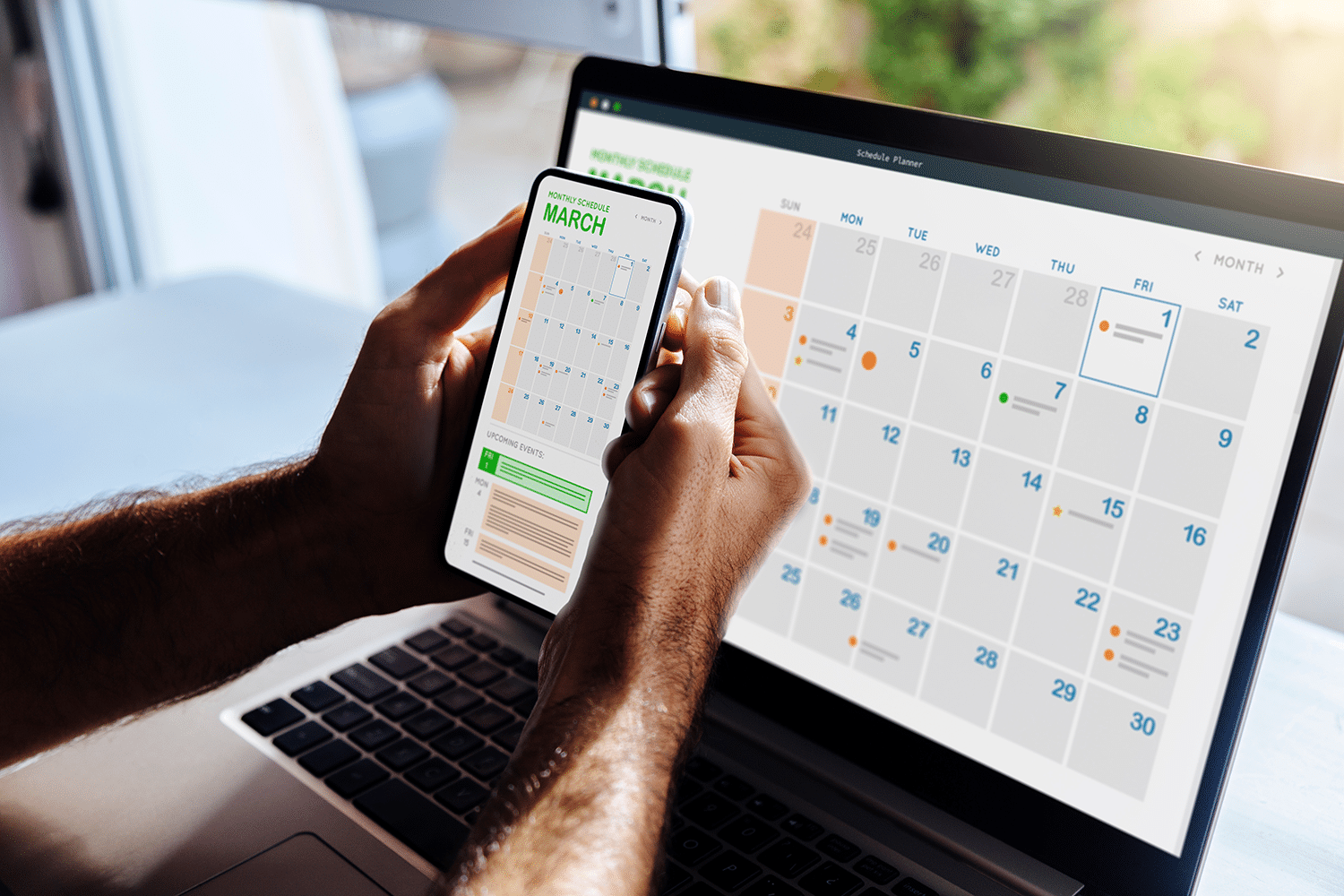
SMS Marketing: Healthcare Communication Use Cases
Text messaging has become a huge part of providers’ ability to stay connected with their patients, especially when sending appointment reminders, follow-up messages, or quick health tips.
Texting helps reduce no-shows, keeps patients engaged, and improves clinic operations. But, as great as text messaging is, it’s important to remember that healthcare providers need to follow some rules.
Patient privacy is a top priority, and regulations like the Health Insurance Portability and Accountability Act (HIPAA) must be followed. This ensures that sensitive information is kept secure and that patients consent before receiving texts.
In this article, we’ll explore how healthcare providers can use text messaging to their advantage while complying with the regulations.
We’ll cover the benefits, best practices, and the steps you need to take to ensure your patient communication is secure and effective.
Benefits of Text Messaging for Healthcare Providers
SMS text messaging helps improve patient communication, which contributes to the efficiency of daily operations. Below are the key benefits that healthcare professionals experience when using SMS.
Cutting Down on Missed Appointments
When patients forget or fail to attend their scheduled visits, it can disrupt the provider’s schedule and may result in wasted time and resources.
A simple reminder sent the day before an appointment can prompt patients to confirm or take necessary actions if they need to reschedule.
Faster Payment Collection
Late or missed payments can impact a provider’s cash flow and create administrative burdens. Text messaging offers a simple solution to this problem by sending automated payment reminders.
Many medical professionals include a direct link to a secure payment portal within the SMS to allow patients to make payments right from their mobile devices instead of logging into systems or mail checks.
Automated SMS reminders also reduce the administrative workload for healthcare staff. Instead of manually contacting patients for outstanding balances, staff can rely on automated texts to remind patients about their payments.
Better Communication Between Providers and Patients
Text messaging also allows for two-way communication. Patients can ask questions, request prescription refills, or clarify medical instructions with a simple text.
This means providers can respond quickly to patient inquiries, helping resolve issues faster and ensuring that patients feel supported.
Regular communication, such as follow-up reminders or wellness tips, helps keep patients involved in their care and encourages proactive health management.
Ongoing engagement strengthens the patient-provider relationship and can lead to better health outcomes.
Reduce Operating Costs
Text messaging provides healthcare providers with an efficient, low-cost method of communicating with patients.
Text messaging systems can automate many tasks that previously required manual effort, such as making phone calls or sending paper mail. Healthcare staff can focus on more critical patient care tasks with fewer calls.
11 Common Uses of Text Messaging in Healthcare
There are several other ways SMS can be used to improve patient care and clinic operations, which include:
1. Verifying Patient Information
Traditionally, verifying patient details requires phone calls, paper forms, or in-person verification, which can be time-consuming for healthcare staff and patients.
These methods often lead to delays, especially if patients miss phone calls or fail to return forms on time.
In contrast, sending a text message to request confirmation of personal details allows patients to quickly verify and update their information directly from their mobile phones.
2. Appointment Reminders and Scheduling
Missed appointments are a major challenge for health providers. Text messaging offers a simple yet powerful solution by automatically sending SMS appointment reminders and allowing patients to confirm, reschedule, or cancel appointments.
If you’re managing a high volume of appointments, text messaging offers the scalability needed to maintain an organized and efficient schedule.
Automated systems can also send out reminders in bulk, allowing even large clinics or hospitals to keep track of appointments with minimal effort.
3. Patient Follow-Ups
You can send follow-up messages after a procedure or treatment to check on the patient’s recovery. These texts can also remind patients of any necessary follow-up appointments or actions.
Many patients, especially those with busy schedules or limited access to transportation, appreciate the convenience of communicating via text rather than scheduling additional follow-up appointments.
4. Payment Reminders
Incorporating payment links directly into the message further simplifies the payment process. Healthcare professionals make it convenient for patients to settle their bills by including a secure link that directs patients to an online payment portal.
5. Sharing Documents Before an Appointment
Sharing documents via SMS also reduces the risk of errors or missing information. Patients have more time to gather accurate information, such as insurance details or past medical records, by filling out forms in advance.
6. Checking Into Appointments or Reporting Late Arrivals
Allowing patients to check into their appointments via text eliminates the need for lengthy in-person registration processes. Before the scheduled visit, patients can receive a text message prompting them to check in.
7. Collecting Feedback and Reviews
Text messaging offers a faster, more efficient solution to collect feedback seamlessly and promptly after a patient’s visit or treatment.
You can send automated SMS messages to patients shortly after their appointments. This prompt allows patients to provide feedback while their experience is still fresh in their minds.
8. Medication Reminders
Many patients struggle with remembering their medication schedules, which can lead to missed doses and complications. Sending automated text reminders makes it easier for patients to stay on track.
9. Patient Education
Text messaging is also an effective tool for promoting preventive care. Healthcare professionals can send educational reminders about vaccinations, annual check-ups, or routine screenings that are critical for the early detection and prevention of diseases.
10. Internal Communication
Using an employee texting platform in healthcare is a fast and efficient way to keep staff informed and connected.
With SMS, you can easily send messages to individuals, specific groups, or the entire workforce. This helps with shift scheduling, filling last-minute shifts, sending emergency alerts, and reminding staff about meetings or updates.
11. Customer Support
Patients often have questions about appointments, medications, billing, or general health concerns. Text messaging provides a quick way for them to contact their healthcare provider for assistance.
How to Choose the Right Text Messaging Platform
With so many platforms available, knowing which one fits best can be challenging. Here’s a guide to help you select the ideal platform.
Identify Your Needs
Before choosing a business texting platform for your healthcare practice, assessing your specific needs is important.
Determine what types of messages you’ll be sending (e.g., appointment reminders, follow-ups, and billing alerts), how many messages you expect to send, and whether you require two-way messaging for patient responses.
Also, the need for integration with existing health systems, like EHR software, must be considered, and the platform must support managing patient consent and opt-in preferences.
Choose Secure Platforms
Once you have identified your needs, it’s time to choose the best platform that meets those requirements.
Patient text messaging services, like Textellent, offer encryption and seamless integration with scheduling systems.
With Textellent, you can automatically send appointment reminders, confirmations, and follow-ups to reduce no-shows and improve patient engagement.
This secure text messaging platform also allows you to send messages from your existing business number, which makes it easier for patients to recognize.
Obtain Patient Consent
HIPAA regulations require that patients provide permission before receiving any text messages related to their health care.
Patients must be informed about the types of messages they will receive and agree to be contacted via text to adhere to the legal requirements and respect patients’ preferences. Consent can be collected in writing during intake or through digital forms.
Look for Automation Features
Automated reminders and messages save time, reduce manual work, and ensure consistent patient communication.
You should look for a platform that automatically sends appointment confirmations, follow-up reminders, billing notifications, and other essential messages.
SMS marketing software like Textellent offers powerful automation capabilities that enable you to schedule multiple reminders, send follow-up texts after appointments, and even automate pre-appointment paperwork requests.
Consider Customization Options
A platform that allows you to tailor messages based on patient needs, appointment types, or specific conditions ensures that your communication feels personal rather than generic.
Textellent provides customizable templates that can be adapted to suit different types of messages, such as appointment reminders, follow-ups, or health tips.
With options to include personalized details like patient names or specific instructions, you can ensure that each message resonates with the patient.
Best Healthcare SMS Practices You Should Implement
When using SMS in healthcare, safety and privacy are top priorities. Patients trust healthcare professionals with sensitive information, so it’s important to follow strict rules to protect their data.
Here’s how healthcare organizations can safely implement text messaging:
Limit the Information Shared in Texts
Text messages should not include sensitive personal health information (PHI), such as diagnoses, test results, or detailed medical history.
Instead, use text messages for general communication like appointment reminders, medication prompts, or administrative updates.
For more detailed or sensitive matters, you may direct the patient to a secure patient portal or ask them to call the clinic.
For example, an appropriate message would be: “Reminder: Your appointment with Dr. Smith is tomorrow at 10 AM. Please reply to confirm.”
Encrypt All Communication
All messages sent through the healthcare system must be encrypted to protect patient data. Encryption ensures that if the message is intercepted, unauthorized parties cannot read the information.
A secure messaging platform will typically provide this encryption in transit (while being sent) and at rest (stored data).
Implement Access Controls
Only authorized healthcare personnel should have access to the messaging system. You must implement strict access controls, such as multi-factor authentication, to ensure only designated staff members can send or view messages.
This prevents unauthorized access to patient information and keeps communications secure within the healthcare organization.
Provide Patients with an Opt-Out Option
While some patients may prefer SMS, others may not. Always provide an easy way for patients to opt out of receiving text messages if they no longer wish to be contacted in that manner.
5 Reasons Why Textellent Is the Best Texting Solution for Healthcare
Are you considering using a texting platform for your healthcare practice but still weighing your options? You want a solution that’s easy, efficient, and trusted by patients.
If you’re on the fence, here are five compelling reasons why Textellent should be your top choice for patient communication:
- Textellent allows you to send text messages directly from your existing business phone number. Patients recognize and trust your business number and ensure they respond to important updates.
- Textellent’s automated appointment confirmations and reminders are sent at optimal intervals, and patients can easily confirm or reschedule via text. Keeping patients informed and on track helps you maintain a full schedule and reduce costly no-shows.
- Textellent simplifies the check-in process by allowing you to send secure links for pre-appointment paperwork directly to your patients’ phones. Patients can complete forms before arriving to reduce wait times and boost the efficiency of your clinic.
- Textellent’s customizable text templates make patient communication easy and engaging. The professionally designed templates ensure your messages capture attention and encourage a response.
- Textellent automates follow-up texts to help you check in on patient satisfaction and gather valuable feedback. After each appointment, you can request reviews or offer special promotions to encourage return visits.
Automate Your Patient Communication with Textellent
Looking for a better way to communicate with patients and simplify daily operations?
With Textellent, you can easily automate appointment reminders, send personalized follow-ups, and keep everything running while staying HIPAA-compliant.
Reduce no-shows, keep patients engaged, and run your clinic smoothly with easy-to-use texting features. With customizable text templates and automation capabilities, you can focus on providing great care while keeping patients engaged.
Sign up for a free trial or request a demo today to see how it can improve communication at your practice!
FAQs About SMS Marketing Healthcare
What is SMS in healthcare?
In the healthcare industry, SMS refers to the use of short message service (text messaging) to communicate with patients.
Healthcare facilities use SMS for appointment reminders, follow-up instructions, prescription refill alerts, and even wellness check-ins. These healthcare text messages help streamline communication, reduce missed appointments, and improve overall patient satisfaction.
Why is SMS not HIPAA compliant?
Standard SMS (text messaging) is not inherently HIPAA compliant because it does not have built-in security features such as end-to-end encryption, user authentication, and audit controls.
These are required under HIPAA to protect Protected Health Information (PHI). Sending patient data through unsecured SMS may expose it to unauthorized access, making it a potential violation of HIPAA.
Is SMS marketing illegal?
Text message marketing is legal, but it’s subject to strict regulations. In the U.S., healthcare providers must comply with laws such as the Telephone Consumer Protection Act (TCPA), which requires prior written consent before sending promotional messages.
Is EZ texting HIPAA compliant?
EZ Texting is not HIPAA compliant, as it does not offer the necessary data protection features or sign Business Associate Agreements. While it can be a good platform for general promotional messaging that doesn’t involve patient data, it isn’t suitable for any communication involving PHI.
Healthcare providers that need to send sensitive information via text should choose a platform that explicitly supports HIPAA compliance.





